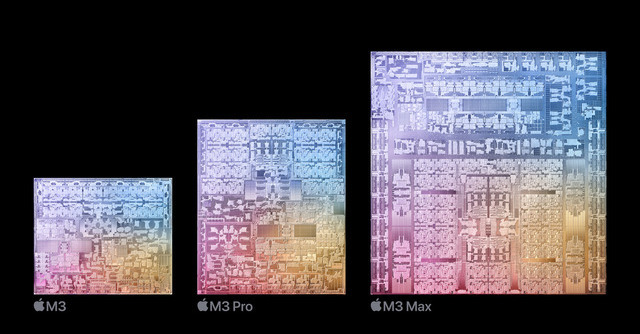
Explained: All about Apple’s new M3 chips


At the Apple event 2023 on October 30, the Cupertino-headquartered tech giant announced the M3 family of chips. It comprises M3, M3 Pro, and M3 Max, touted at the first personal computer chips built using the 3nm process technology that allows for more transistors to be packed into a smaller space.
This announcement follows the launch of M2 chips by Apple last year in June. Apple has been developing its M-series chips since 2020, built exclusively for Mac products. This year’s launch is somewhat different from the M1 and M2 processors launch since it is the first time Apple has announced all three tiers of chips at the same time (M3, M3 Pro, and M3 Max).
However, this alone is not the only differentiating factor. Following are key highlights of the new M-series processors.

Feature highlights
The M3 chipsets feature next-generation GPU that uses dynamic caching that renders faster speed and higher efficiency. Unlike traditional GPUs, dynamic caching helps in increasing the average utilisation of the processor by using the exact amount of memory needed for each task. This increases the performance for more demanding apps and games.
M3 chips also have the hardware-accelerated ray tracing feature to create realistic and physically accurate images. Further, with the new hardware-accelerated mesh shading, Mac can now deliver more visually complex scenes in games and graphics-intensive apps, all the while consuming less power and delivering 65% more performance at its peak as compared to M1.

These chips have enhanced neural engine for running advanced machine learning models. It helps in operating AI image processing tools, noise reduction, and offering high resolution in Topaz. Apple said that with M3, it is the first time that the media engine supports AV1 decoding for power-efficient playback of streaming services to further extend battery life.
Improvement on predecessors
Unlike the predecessors, which are built on 5-nanometer process technology, M3 chips are built on a 3-nanometer process. As mentioned above, this helps in packing more transistors on the chips. While the M2 chip has 20 billion transistors, the M3 has 25 billion. This number is even significantly higher for M3 Pro (37 billion) and M3 Max (92 billion).

In terms of speed, M3 offers 2.5 times faster speed that M1 family of chips. The CPU performance cores, efficiency core, and neural engine are 30%, 50%, and 60% faster than M1.
